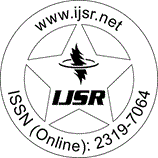Downloads: 14
United States | Information Technology | Volume 14 Issue 3, March 2025 | Pages: 204 - 206
Enabling De-Customization of PeopleSoft Through Cloud Migration for Improved Student Outcomes
Abstract: Higher education institutions rely on PeopleSoft as a critical enterprise resource planning (ERP) solution to manage student records, financial aid, human resources, and other administrative functions. However, excessive customizations have led to increased complexity, higher maintenance costs, and hindered upgrades, ultimately affecting student outcomes. This paper explores how migrating PeopleSoft to Oracle Cloud Infrastructure (OCI) enables universities to streamline operations by reducing unnecessary customizations. By leveraging OCI?s advanced automation, scalability, and security, institutions can adopt a clean configuration approach that enhances system reliability, improves service delivery, and supports data - driven decision - making to drive better student experiences.
Keywords: PeopleSoft Migration, Enterprise Resource Planning, Oracle Cloud Infrastructure, Security, Customization, Compliance
How to Cite?: Santhosh Varatharajan, "Enabling De-Customization of PeopleSoft Through Cloud Migration for Improved Student Outcomes", Volume 14 Issue 3, March 2025, International Journal of Science and Research (IJSR), Pages: 204-206, https://www.ijsr.net/getabstract.php?paperid=SR25305090834, DOI: https://dx.doi.org/10.21275/SR25305090834
